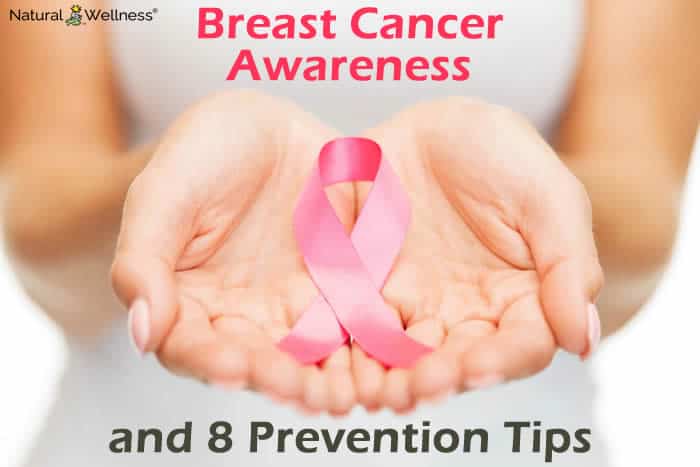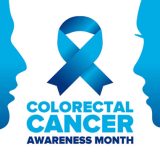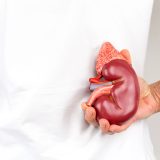

The Early Signs of Breast Cancer
It’s important to catch signs of breast cancer early on. The 5-year relative survival rate for breast cancer is 100%, if caught in the localized stage. You can check for it by having a monthly self breast exam or having a regularly scheduled clinical breast exam or mammogram.
Many early signs are undetectable without a professional exam, but there are a few symptoms that you can notice. (5)
Those include the following:
- Breast or nipple feels differently – If either nipple feels tender or you are feeling a lump near your breast or underarm area, you should contact a doctor to get that checked out. If the texture of your skin or nipple feels different, that is also worth being looked at.
- Change in appearance – If there is any unexpected change in the size of your breasts or nipples, you should consult a physician. This includes unexpected swelling or shrinking of the breast, if the nipples start to turn inward or inverted, or if the skin starts to turn red, scaly, swollen, appears to have ridges, or pitting that looks similar to the skin of an orange. All of these are symptoms that should be looked at by a professional.
- Nipple discharge – If there is any sort of discharge coming from your nipple, get it looked at immediately. This includes discharges that are clear, bloody, or milky (for those who are not breast-feeding).
How Does Breast Cancer Start?
No one really knows what causes breast cancer. There has been a lot of research but doctors have yet to pinpoint the specific cause. What is known though is that it is always caused by damage to a cell’s DNA. (2)
Some women have certain risk factors that can potentially lead to developing breast cancer. These risk factors are broken into the following 2 types. (3)
Type 1: Genetic Factors
- Gender – Breast cancer occurs in women 100 times more often than men.
- Age – 2 out of 3 cases of invasive breast cancer are diagnosed after the age of 55.
- Race – Caucasian women are more often diagnosed than any other race.
- Genetic history – If a relative has been diagnosed with breast or ovarian cancer, you have a higher risk of being diagnosed in the future. If the relative was diagnosed prior to the age of 50, then your risk is even higher.
Type 2: Environmental and Life Factors
All of the below factors may potentially increase the risk of breast cancer.
- Lack of physical activity
- Poor diet
- Being overweight or obese
- Drinking alcohol
- Radiation to the chest
Breast cancer is not contagious, meaning it cannot be spread from person to person. Also, despite popular belief, it is not caused by underwire bras, implants, deodorants, antiperspirants, mammograms, caffeine, plastic food-serving items, microwaves, or cell phones.
The Four Stages of Breast Cancer
There are four stages of breast cancer, and some of them are broken down into a sub groups.
They are detailed below:
Stage 0
These are non-invasive breast cancers where there are no signs of cancer cells or non-cancerous abnormal expanding beyond the part of the breast from where they started. This is very treatable. (4)
Stage 1
This is when cancer cells spread to neighboring tissue. It is broken up into 2 different types. Just like Stage 0, both versions of Stage 1 are very treatable. (4)
- Stage 1A – The cancer is very small (about 2 centimeters) and has not spread to the lymph nodes.
- Stage 1B – There is no tumor in the breast, but instead a small cluster of cancer cells found in the lymph nodes or there is a small cancer in the breast and also a small cluster of cancer cells in the lymph nodes.
Stage 2
In stage 2, the cancer is growing but can still be contained to the breasts or the growth has only spread to nearby lymph nodes. Stage 2 is also split into 2 groups. (4)
- Stage 2A – In this stage, a few different things can happen:
-
- No tumor is associated with cancer cells and less than 4 axillary nodes have cancer cells.
- The tumor is less than 2 centimeters and cancer cells are present in less than 4 axillary nodes.
- The tumor has not spread to axillary nodes but is between 2 and 5 centimeters.
- Stage 2B – This group involves either of the following:
-
- A tumor between 2 and 5 centimeters and has spread to less than 4 lymph nodes.
- The tumor is larger than 5 centimeters but has not spread to lymph nodes.
Stage 3
In this stage, the breast cancer has spread beyond the immediate region of the tumor and may have invaded nearby lymph nodes or muscle tissue but has yet to spread to the organs. This is a more advanced stage of breast cancer but it can still be treated. (4)
- Stage 3A – It can mean any of the following:
-
- There is no tumor but cancer cells have spread between 4 and 9 lymph nodes.
- A tumor larger than 5 centimeters and cancer cells are found in lymph nodes.
- The tumor is larger than 5 centimeters and has spread to up to 3 lymph nodes under the arm or near the breast bone.
- Stage 3B – The tumor can be any size and cancer cells have broken into the chest wall or breast skin with signs of swelling, inflammation, or ulcers. This can also invade up to 9 lymph nodes.
- Stage 3C – It can mean any of the following:
-
- No tumor is found, or there can be a tumor of any size along with chest wall or breast skin with signs of swelling, inflammation, or ulcers, and the cancer has spread to 10 or more lymph nodes under the arm.
- There’s no tumor, or there is a tumor of any size along with cancer that has spread to lymph nodes near your collarbone area.
- No tumor is found, or there’s a tumor of any size along with cancer spread to the lymph nodes under the arm and near the breastbone.
Note: Stage 3C breast cancer is also broken into “operable” and “inoperable.” It is important to note that “inoperable” does not mean it’s not treatable. It just means that it can’t be treated by a simple surgery. Instead, other treatment will be needed in order to shrink the tumors and stop the spreading of the cancer like radiation, chemotherapy, or hormone therapy.
Stage 4
In this stage, the cancer has spread to other areas of the body including the brain, bones, lungs, and liver. Unfortunately this stage is considered incurable, but there are new medical breakthroughs that are helping women live longer as they cope with the disease in this chronic condition. (4)
8 Tips to Prevent Breast Cancer
If you are concerned about getting breast cancer, you can make some lifestyle choices to help prevent it while also having a healthier life in general. (1)
- Drink less alcohol – As previously mentioned, drinking alcohol can increase the risk of breast cancer. If you limit your alcohol consumption, this can help reduce the risk.
- Don’t smoke – Smoking can increase the risk of breast cancer.
- Watch your weight – Being overweight or obese can increase the risk of breast cancer. If you eat healthier and exercise, it will help reduce the risk of breast cancer.
- Breastfeed – Breastfeeding may help reduce the risk of breast cancer. The longer you breastfeed, the longer you protect yourself from cancer.
- Limit dosage and duration of hormone therapy – Hormone therapy can increase the risk of breast cancer. If going through hormone therapy for menopausal symptoms, you should try to limit the therapy to between 3 and 5 years.
- Avoid radiation and environmental pollution – Some studies show that extended exposure to radiation from medical imaging can lead to breast cancer. You should try to reduce your exposure to only when necessary.
- Contraception choices – Some studies show that various birth control methods, including IUDs and hormonal contraceptives may pose a risk of breast cancer.
- Finally, as previously mentioned, you should regularly check yourself for any signs of breast cancer. If you are noticing any changes in your breasts or nipples, consult a physician right away.




